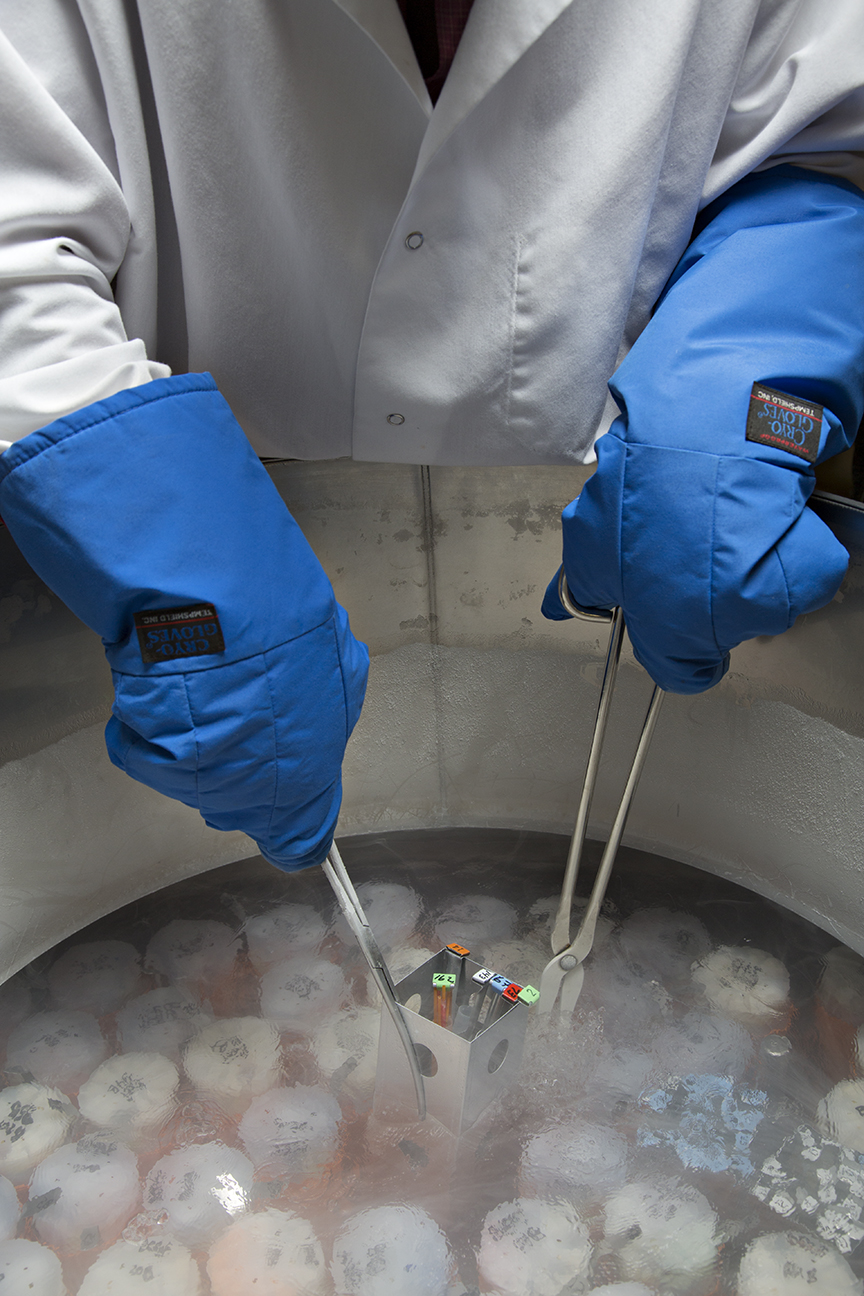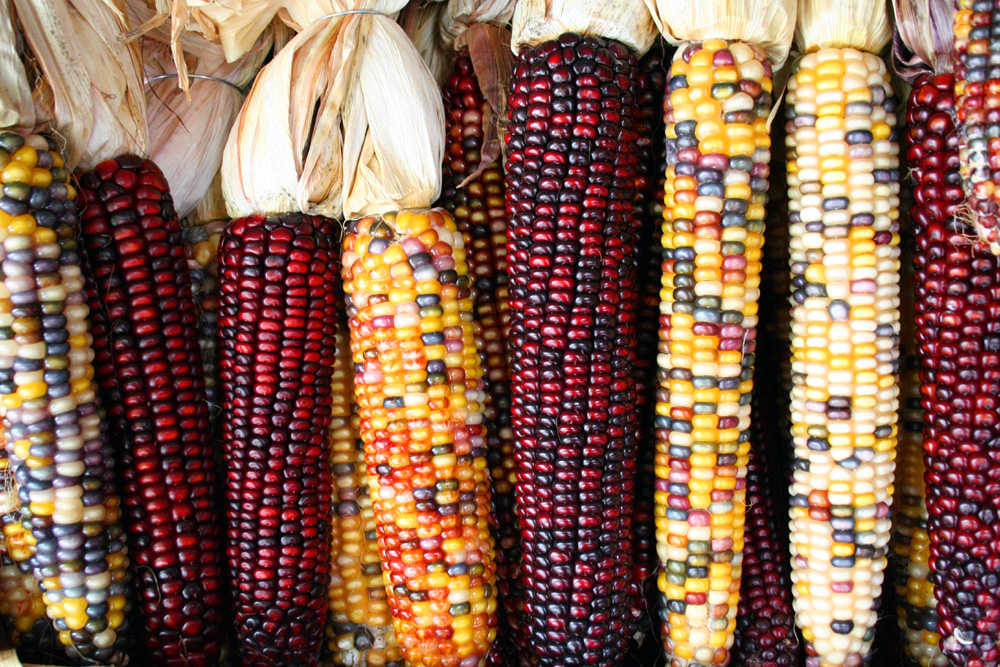|
Recalcitrant
Recalcitrant seeds are seeds that do not survive drying and freezing during ex-situ conservation. By and large, these seeds cannot resist the effects of drying or temperatures less than 10 °C (50 °F); thus, they cannot be stored for long periods like orthodox seeds because they can lose their viability. Plants that produce recalcitrant seeds include avocado, mango, mangosteen, lychee, cocoa, rubber tree, some horticultural trees, aquatic plants such as ''Nymphaea caerulea'''','' and several plants used in traditional medicine, such as species of ''Virola'' and ''Pentaclethra''. Generally speaking, most tropical pioneer species have orthodox seeds but many climax species have recalcitrant or intermediate seeds. Mechanisms of damage The two main mechanisms causing damage to recalcitrant seeds are desiccation effects on the intracellular structures and metabolic damage from the formation of toxic chemicals such as free radicals. An example of the first type of damage would be ... [...More Info...] [...Related Items...] OR: [Wikipedia] [Google] [Baidu] |
Ex-situ Conservation
Svalbard GLOBAL SEED BANK, an ''ex situ'' conservation. ''Ex situ'' conservation literally means, "off-site conservation". It is the process of protecting an endangered species, variety or breed, of plant or animal outside its natural habitat; for example, by removing part of the population from a threatened habitat and placing it in a new location, an artificial environment which is similar to the natural habitat of the respective animal and within the care of humans, example are zoological parks and wildlife safaris. The degree to which humans control or modify the natural dynamics of the managed population varies widely, and this may include alteration of living environments, reproductive patterns, access to resources, and protection from predation and mortality. ''Ex situ'' management can occur within or outside a species' natural geographic range. Individuals maintained ''ex situ'' exist outside an ecological niche. This means that they are not under the same selection pres ... [...More Info...] [...Related Items...] OR: [Wikipedia] [Google] [Baidu] |
Cryopreservation
Cryo-preservation or cryo-conservation is a process where Organism, organisms, organelles, cell (biology), cells, Biological tissue, tissues, extracellular matrix, Organ (anatomy), organs, or any other biological constructs susceptible to damage caused by unregulated chemical kinetics are preserved by cooling to very low temperatures (typically using solid carbon dioxide or using liquid nitrogen). At low enough temperatures, any Enzyme, enzymatic or chemical activity which might cause damage to the biological material in question is effectively stopped. Cryopreservation methods seek to reach low temperatures without causing additional damage caused by the formation of ice crystals during freezing. Traditional cryopreservation has relied on coating the material to be frozen with a class of molecules termed cryoprotectants. New methods are being investigated due to the inherent toxicity of many cryoprotectants. Cryoconservation of animal genetic resources is done with the intentio ... [...More Info...] [...Related Items...] OR: [Wikipedia] [Google] [Baidu] |
Orthodox Seeds
Orthodox seeds are seeds which will survive drying and/or freezing during ex-situ conservation, as opposed to recalcitrant seeds, which will not. According to information from the U.S. Department of Agriculture, there is variation in the ability of orthodox seeds to withstand drying and storage, with some seeds being more sensitive than others. Thus some seeds are considered intermediate in their storage capability while others are fully orthodox. One notable example of a long-lived orthodox seed which survived accidental storage followed by controlled germination is the case of the 2,000-year-old Judean date palm (cultivar of ''Phoenix dactylifera'') seed which successfully sprouted in 2005. This particular seed is reputed to be the oldest viable seed, but the upper survival time limit of properly stored seeds remains unknown. See also *Micropropagation *Plant propagation *Seedbank A seed bank (also seed banks or seeds bank) stores seeds to preserve genetic diversity; hence it ... [...More Info...] [...Related Items...] OR: [Wikipedia] [Google] [Baidu] |
Mango
A mango is an edible stone fruit produced by the tropical tree ''Mangifera indica''. It is believed to have originated in the region between northwestern Myanmar, Bangladesh, and northeastern India. ''M. indica'' has been cultivated in South and Southeast Asia since ancient times resulting in two types of modern mango cultivars: the "Indian type" and the "Southeast Asian type". Other species in the genus ''Mangifera'' also produce edible fruits that are also called "mangoes", the majority of which are found in the Malesian ecoregion. Worldwide, there are several hundred cultivars of mango. Depending on the cultivar, mango fruit varies in size, shape, sweetness, skin color, and flesh color which may be pale yellow, gold, green, or orange. Mango is the national fruit of India, Pakistan and the Philippines, while the mango tree is the national tree of Bangladesh. Etymology The English word ''mango'' (plural "mangoes" or "mangos") originated in the 16th century from the Por ... [...More Info...] [...Related Items...] OR: [Wikipedia] [Google] [Baidu] |
Mangosteen
Mangosteen (''Garcinia mangostana''), also known as the purple mangosteen, is a tropical evergreen tree with edible fruit native to tropical lands surrounding the Indian Ocean. Its origin is uncertain due to widespread prehistoric cultivation. It grows mainly in Southeast Asia, southwest India and other tropical areas such as Colombia and Puerto Rico, where the tree has been introduced. The tree grows from tall. The fruit of the mangosteen is sweet and tangy, juicy, somewhat fibrous, with fluid-filled vesicles ( like the flesh of citrus fruits), with an inedible, deep reddish-purple colored rind (exocarp) when ripe. In each fruit, the fragrant edible flesh that surrounds each seed is botanically endocarp, i.e., the inner layer of the ovary.Mabberley, D.J. 1997. The plant book: A portable dictionary of the vascular plants. Cambridge University Press, Cambridge. The seeds are of similar size and shape to almonds. Genus ''Garcinia'' also contains several less known fruit-bearing ... [...More Info...] [...Related Items...] OR: [Wikipedia] [Google] [Baidu] |
Theobroma Cacao
''Theobroma cacao'', also called the cacao tree and the cocoa tree, is a small ( tall) evergreen tree in the family Malvaceae. Its seeds, cocoa beans, are used to make chocolate liquor, cocoa solids, cocoa butter and chocolate. The largest producer of cocoa beans in 2018 was Ivory Coast, 2.2 million tons. Description Its leaves are alternate, entire, unlobed, long and broad. Flowers The flowers are produced in clusters directly on the trunk and older branches; this is known as cauliflory. The flowers are small, diameter, with pink calyx. The floral formula, used to represent the structure of a flower using numbers, is ✶ K5 C5 A(5°+52) (5). While many of the world's flowers are pollinated by bees ( Hymenoptera) or butterflies/moths ( Lepidoptera), cacao flowers are pollinated by tiny flies, ''Forcipomyia'' midges in the subfamily Forcipomyiinae. Using the natural pollinator ''Forcipomyia'' midges for ''Theobroma cacao'' was shown to have more fruit production th ... [...More Info...] [...Related Items...] OR: [Wikipedia] [Google] [Baidu] |
Orthodox Seed
Orthodox seeds are seeds which will survive drying and/or freezing during ex-situ conservation, as opposed to recalcitrant seeds, which will not. According to information from the U.S. Department of Agriculture, there is variation in the ability of orthodox seeds to withstand drying and storage, with some seeds being more sensitive than others. Thus some seeds are considered intermediate in their storage capability while others are fully orthodox. One notable example of a long-lived orthodox seed which survived accidental storage followed by controlled germination is the case of the 2,000-year-old Judean date palm (cultivar of ''Phoenix dactylifera'') seed which successfully sprouted in 2005. This particular seed is reputed to be the oldest viable seed, but the upper survival time limit of properly stored seeds remains unknown. See also *Micropropagation *Plant propagation *Seedbank A seed bank (also seed banks or seeds bank) stores seeds to preserve genetic diversity; hence it ... [...More Info...] [...Related Items...] OR: [Wikipedia] [Google] [Baidu] |
Micropropagation
Micropropagation or tissue culture is the practice of rapidly multiplying plant stock material to produce many progeny plants, using modern plant tissue culture methods. Micropropagation is used to multiply a wide variety of plants, such as those that have been genetically modified or bred through conventional plant breeding methods. It is also used to provide a sufficient number of plantlets for planting from seedless plants, plants that do not respond well to vegetative reproduction or where micropropagation is the cheaper means of propagating (e.g. Orchids.) Cornell University botanist Frederick Campion Steward discovered and pioneered micropropagation and plant tissue culture in the late 1950s and early 1960s. Steps In short, steps of micropropagation can be divided into 4 stages. # Selection of mother plant # Multiplication # Rooting and acclimatizing # Transfer new plant to soil Selection of mother plant Micropropagation begins with the selection of plant material to b ... [...More Info...] [...Related Items...] OR: [Wikipedia] [Google] [Baidu] |
Apple Mango And Cross Section Edit1
An apple is an edible fruit produced by an apple tree (''Malus domestica''). Apple fruit tree, trees are agriculture, cultivated worldwide and are the most widely grown species in the genus ''Malus''. The tree originated in Central Asia, where its wild ancestor, ''Malus sieversii'', is still found today. Apples have been grown for thousands of years in Asia and Europe and were brought to North America by European colonization of the Americas, European colonists. Apples have Religion, religious and mythology, mythological significance in many cultures, including Norse mythology, Norse, Greek mythology, Greek, and Christianity in Europe, European Christian tradition. Apples grown from seed tend to be very different from those of their parents, and the resultant fruit frequently lacks desired characteristics. Generally, apple cultivars are propagated by clonal grafting onto rootstocks. Apple trees grown without rootstocks tend to be larger and much slower to fruit after plantin ... [...More Info...] [...Related Items...] OR: [Wikipedia] [Google] [Baidu] |
Free Radical
A daughter category of ''Ageing'', this category deals only with the biological aspects of ageing. Ageing Ailments of unknown cause Biogerontology Biological processes Causes of death Cellular processes Gerontology Life extension Metabolic disorders Metabolism Old age Time in life Wikipedia categories named after diseases and disorders {{CatAutoTOC ... [...More Info...] [...Related Items...] OR: [Wikipedia] [Google] [Baidu] |
Seedbank
A seed bank (also seed banks or seeds bank) stores seeds to preserve genetic diversity; hence it is a type of gene bank. There are many reasons to store seeds. One is to preserve the genes that plant breeders need to increase yield, disease resistance, drought tolerance, nutritional quality, taste, etc. of crops. Another is to forestall loss of genetic diversity in rare or imperiled plant species in an effort to conserve biodiversity ex situ. Many plants that were used centuries ago by humans are used less frequently now; seed banks offer a way to preserve that historical and cultural value. Collections of seeds stored at constant low temperature and low moisture are guarded against loss of genetic resources that are otherwise maintained in situ or in field collections. These alternative "living" collections can be damaged by natural disasters, outbreaks of disease, or war. Seed banks are considered seed libraries, containing valuable information about evolved strategies to combat ... [...More Info...] [...Related Items...] OR: [Wikipedia] [Google] [Baidu] |
Plant Propagation
Plant propagation is the process by which new plants grow from a variety of sources: seeds, cuttings, and other plant parts. Plant propagation can also refer to the man-made or natural dispersal of seeds. Propagation typically occurs as a step in the overall cycle of plant growth. For seeds, it happens after ripening and dispersal; for vegetative parts, it happens after detachment or pruning; for asexually-reproducing plants, such as strawberry, it happens as the new plant develops from existing parts. Plant propagation can be divided into four basic types: sexual, asexual (vegetative), layering, and grafting. Countless plants are propagated each day in horticulture and agriculture. The materials commonly used for plant propagation are seeds and cuttings. Sexual propagation Seeds and spores can be used for reproduction (e.g. sowing). Seeds are typically produced from sexual reproduction within a species because genetic recombination has occurred. A plant grown from seeds may ... [...More Info...] [...Related Items...] OR: [Wikipedia] [Google] [Baidu] |







.jpg)